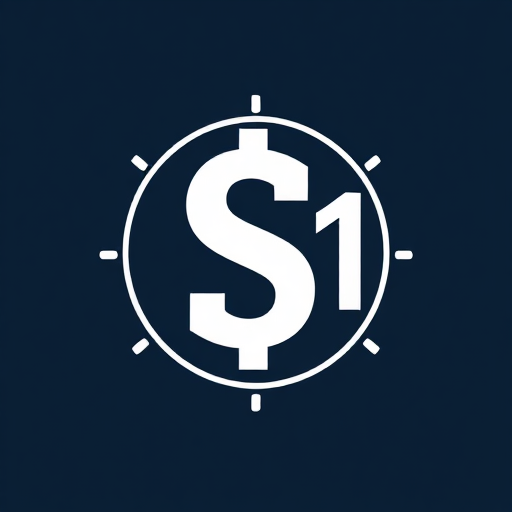Low-Cost Custom Branding Design for Websites

A strong online presence is essential for any business, and branding plays a pivotal role in making that presence impactful. However, many small businesses or startups may find themselves in a situation where they want a custom branding design for their website but are constrained by a limited budget. The good news is that it’s possible to achieve a professional and unique design without breaking the bank. In this article, we’ll explore how to approach low-cost custom branding design for websites, the key elements involved, and how to ensure it reflects your brand identity effectively.
What is Custom Branding Design for Websites?
Custom branding design refers to the creation of unique visual elements tailored specifically to represent your brand’s identity. These elements typically include a logo, color palette, typography, website layout, and graphic styles that all work together to communicate your brand’s values, personality, and tone. Custom branding goes beyond generic templates, allowing you to craft an online presence that stands out and connects with your target audience on a deeper level.
For websites, branding isn’t just about aesthetics; it’s about creating a cohesive experience for visitors that communicates professionalism, trustworthiness, and relevance to your business or service.
Key Elements of Custom Branding Design
- Logo Design The logo is often the first thing people associate with a brand. A well-designed logo communicates the essence of your brand in a simple, memorable way. While hiring a professional designer can be costly, there are several cost-effective solutions available:
- DIY Tools: Platforms like Canva, Looka, and Hatchful by Shopify allow users to create logos with ease, offering a variety of templates and customization options.
- Freelancers: Hiring freelance designers from platforms like Fiverr or Upwork can be a more affordable way to get a custom logo. You can find designers who specialize in minimalistic and modern logo styles at a fraction of the cost of a large design agency.
- Color Palette Color plays a significant role in how visitors perceive your brand. A carefully selected color palette conveys emotions, evokes reactions, and strengthens brand recognition. While it’s important to ensure that your colors align with your industry (e.g., blue for trust in finance), it’s equally essential that they work well together on the website.
- Affordable Tools: Websites like Coolors and Adobe Color Wheel allow you to create a custom color palette without the need for professional design skills.
- Typography Typography is an often-overlooked aspect of branding but can significantly impact how professional and readable your website looks. Choosing the right fonts enhances your brand’s visual appeal and reinforces its character.
- Free Fonts: Platforms like Google Fonts and DaFont provide free, high-quality fonts. It’s essential to choose no more than two or three fonts to maintain consistency and readability across the website.
- Website Layout & User Experience The layout of your website should not only reflect your branding but also ensure that visitors have an intuitive and enjoyable experience. A clean, well-organized design increases user engagement, reduces bounce rates, and builds trust.
- Template-Based Solutions: If custom design is beyond your budget, consider using a premium website template from platforms like ThemeForest, TemplateMonster, or WordPress themes. Many of these templates are fully customizable, allowing you to integrate your brand’s colors, fonts, and logo with minimal effort.
- Graphic Design Elements Visual elements such as icons, buttons, and custom images add personality to your website. These elements should align with your brand’s visual identity, and creating them custom can make a world of difference.
- Freelancers and Online Resources: Many freelance graphic designers offer affordable packages for custom icons or illustrations. Alternatively, you can use stock image websites like Unsplash, Pexels, or Freepik for high-quality images and icons to represent your brand.
Tips for Achieving Low-Cost Custom Branding Design
- Prioritize Core Branding Elements Focus on the essentials: logo, color palette, and typography. These are the foundation of your brand identity and will have the most significant impact on your website’s branding. As your business grows, you can invest in more advanced elements such as custom illustrations or animations.
- Use Design Tools and Resources Today, there are countless affordable tools available for entrepreneurs to create high-quality designs. Tools like Canva, Figma, and Adobe Spark allow you to design website elements without a steep learning curve. In fact, many templates are already optimized for use on websites, making the design process faster and easier.
- Leverage Freelance Designers Freelancers often provide high-quality custom designs at lower rates than large design agencies. Platforms like Fiverr, Upwork, or 99Designs allow you to filter designers by experience level, price range, and expertise. Be sure to check their portfolios to ensure their style aligns with your brand vision.
- Template Customization If you choose to use a pre-designed website template, customizing it with your branding elements can make a significant difference. Adjust the layout, colors, fonts, and images to match your brand’s identity. Many website builders such as Wix, WordPress, and Squarespace provide easy-to-use drag-and-drop builders to help with this process.
- Utilize Open-Source Software Open-source platforms like WordPress offer highly customizable options without the cost of proprietary software. They often come with free plugins, templates, and themes that allow you to implement a professional-looking website design.
- Plan for Scalability When designing on a budget, think ahead about how your branding can grow with your business. Choose tools, templates, and resources that offer scalability so that you can evolve your branding as your company expands without needing a complete redesign.
- Test and Get Feedback One of the most critical aspects of branding design is ensuring it resonates with your target audience. Conduct user testing on your website to see how people interact with it and whether they find it visually appealing. Getting feedback from potential customers or industry peers can help you make improvements without investing too much upfront.
The Benefits of Low-Cost Custom Branding Design
- Cost Efficiency: Low-cost branding solutions allow small businesses to establish a professional online presence without draining their budget. Investing in a custom design can also save money in the long run by ensuring brand consistency across all marketing platforms.
- Increased Credibility: Custom branding sets your business apart from competitors who may be using stock templates. A unique and professional design increases the perceived credibility of your business, making it easier to attract and retain customers.
- Flexibility: With low-cost solutions, you maintain creative control over your branding while still achieving a polished and professional result. You can tailor the design to suit your specific vision and industry needs.
- Long-Term Impact: Good branding is an investment that pays off over time. When your brand’s design is consistently reflected across your website and other marketing materials, it fosters recognition, trust, and loyalty among your audience.
Low-cost custom branding design for websites is a highly achievable goal with the right tools, resources, and strategy. By focusing on core branding elements like logos, colors, and typography, leveraging affordable tools and freelance talent, and ensuring a user-friendly layout, you can create a compelling and professional website that resonates with your audience—without overspending. With a little time, effort, and creativity, your business can enjoy the benefits of a standout online presence that builds trust, attracts customers, and sets you apart in the marketplace.






